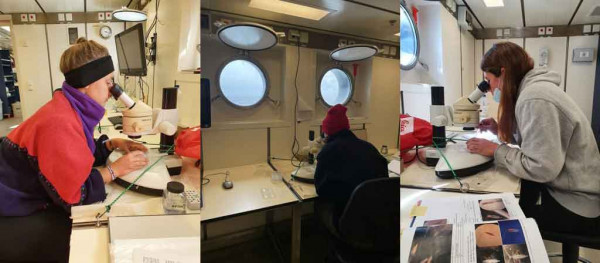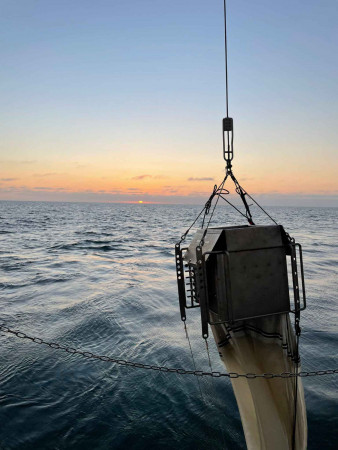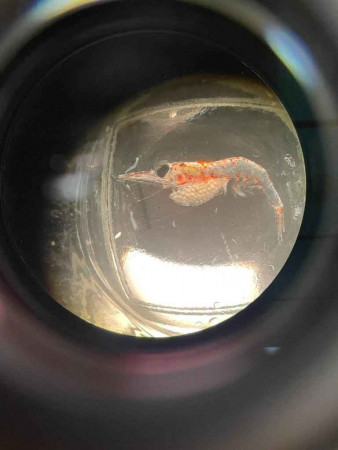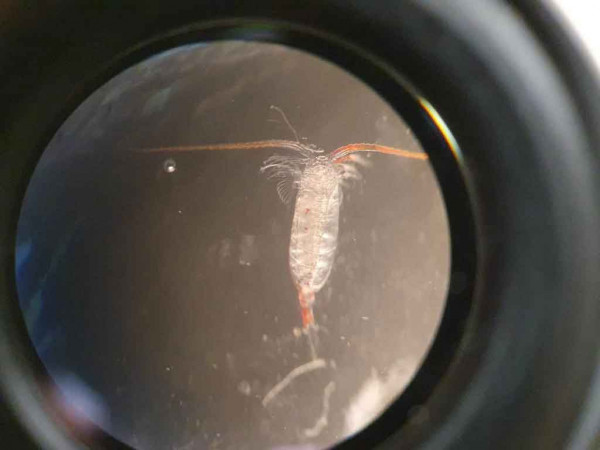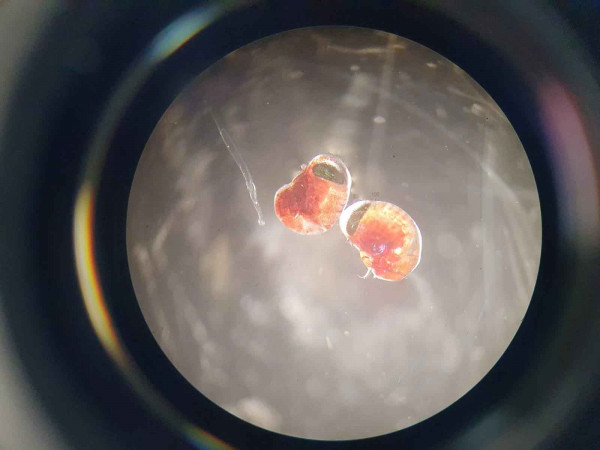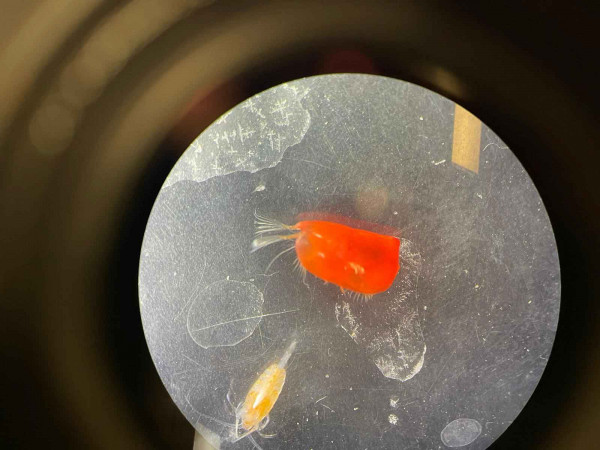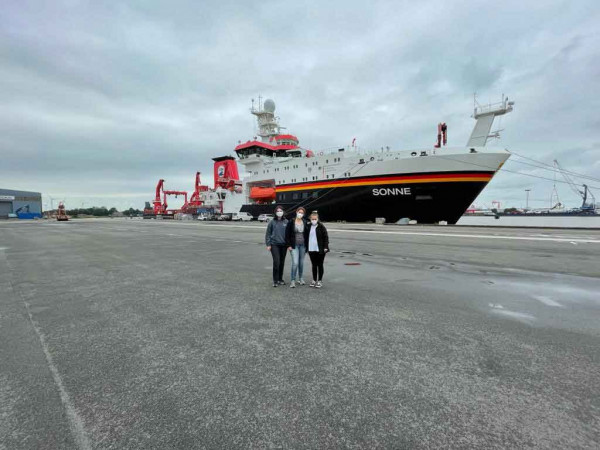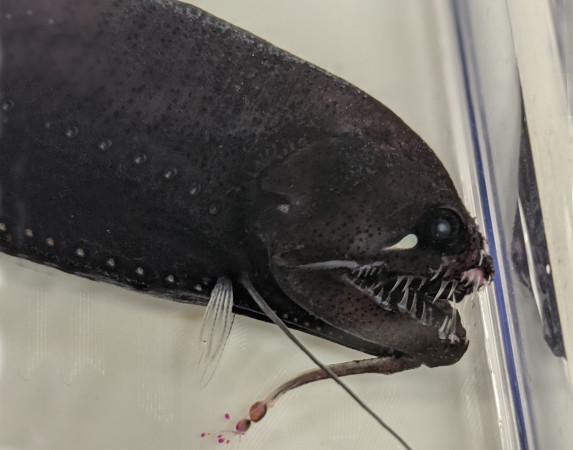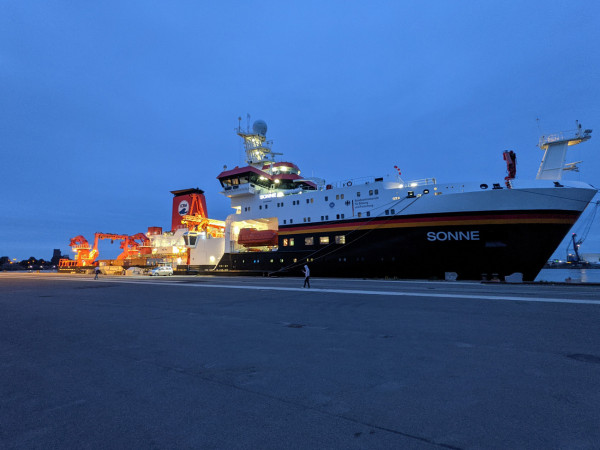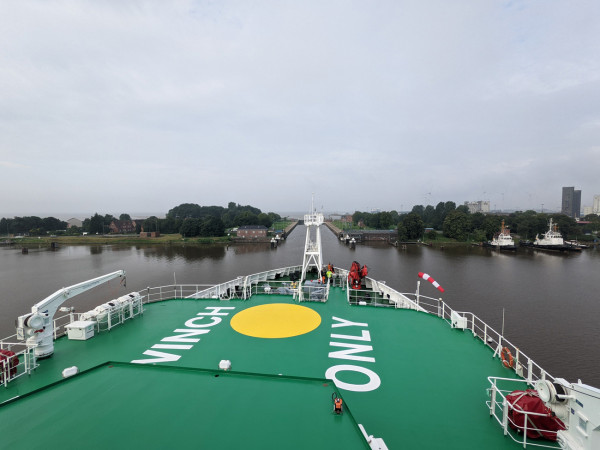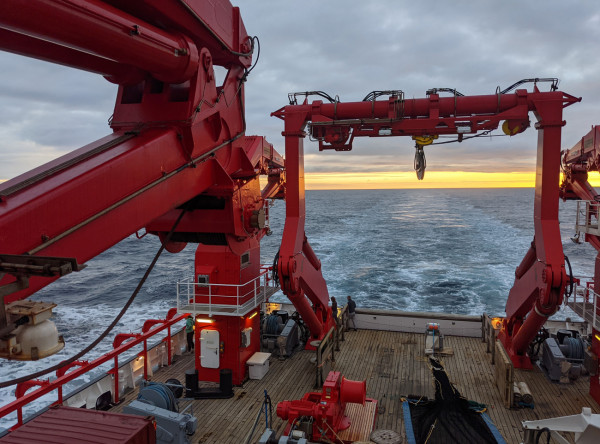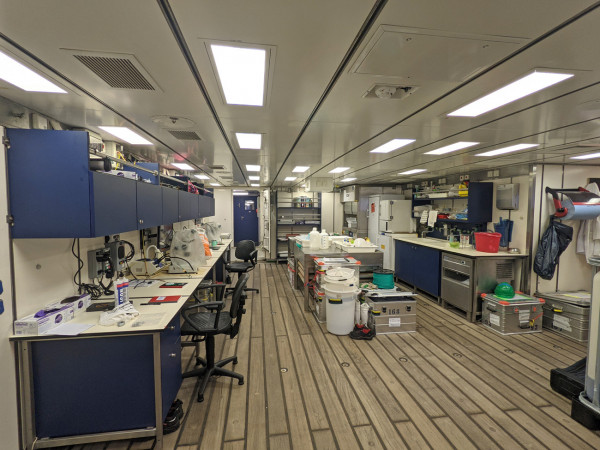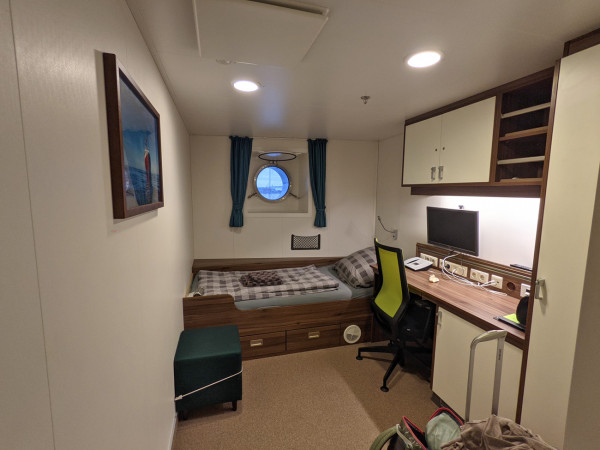Length of the research cruise: 20 August to 2 November 2021
Region of the cruise: Benguela Upwelling Systems off the ocasts of Nambia and South Africa
Purpose of the cruise: Research within the project TRAFFIC
Chief scientist: PD Dr. Tim Rixen, Leibniz Centre for Tropical Marine Research (ZMT)
Cruise reports: https://www.ldf.uni-hamburg.de/sonne/wochenberichte.html
Weekly cruise report of chief scientist PD Dr. Tim Rixen: Reporting period 25 - 31 October 2021
Weekly cruise report of chief scientist PD Dr. Tim Rixen: Reporting period 18 - 24 October 2021
Weekly cruise report of chief scientist PD Dr. Tim Rixen: Reporting period 11 - 17 October 2021
Weekly cruise report of chief scientist PD Dr. Tim Rixen: Reporting period 4 - 10 October 2021
Weekly cruise report of chief scientist PD Dr. Tim Rixen: Reporting period 27 September – 3 October 2021
Weekly cruise report of chief scientist PD Dr. Tim Rixen: Reporting period 20 September – 26 September 2021
Weekly cruise report of chief scientist PD Dr. Tim Rixen: Reporting perios 13 September – 19 September 2021
Weekly cruise report of chief scientist PD Dr. Tim Rixen: Reporting period 6 September – 12 September 2021
Weekly cruise report of chief scientist PD Dr. Tim Rixen: Reporting period 30 August – 5 September 2021
Weekly cruise report of chief scientist PD Dr. Tim Rixen: Reporting period 23 – 29 August 2021
Weekly cruise report of chief scientist PD Dr. Tim Rixen: Reporting period 20 – 22 August 2021
Logbook of the 285th cruise
28 October 2021: Zooplankton
The zooplankton group reports:
Moin! We, Hanna Stegeman, Tine Jordan, and Alix Rommel are the zooplankton group aboard the RV Sonne. We are here on behalf of the Marine Zoology group of Bremen University.
One of the hypotheses of the TRAFFIC-project is that the observed differences between the northern and southern Benguela upwelling system are due to differences in the food web composition and trophic transfer efficiencies of the two regions. The aim of our working group is to investigate whether there are indeed differences in the food web, and if so, what those differences are. Zooplankton are the link between primary production and higher trophic levels, and as such play a vital role in the food web structure. Additionally, their community composition is of importance as depending on species, sex, and developmental stage, they can have large effects on the biogeochemistry of their environment by accelerating the transport of Carbon to the deep through diel vertical migration. Together with the results from the last TRAFFIC-cruise aboard the RV Meteor, the results of this cruise are expected to further elucidate the food web structure and composition as well as add a component on its seasonal variation.
Screening of the samples directly after the cast, determining dominant species.
In the working area, we used a multi-closing net midi with a mesh size of 200µm (MSN 200) to take samples at multiple depths of the water column. This allows us to also get an idea of the vertical distribution of organisms in the water column. With our net we primarily catch copepods, small krill species, salps and other small organisms (size usually less than 2-3 cm) but some small fish as well as a vampire squid have also been part of our catches this time. Once on board, we brought our samples into our lab where for each station and depth, we separated the dominating species by species, sex, and developmental stages and froze samples in -80°C. The rest of the samples were stored in formaldehyde. Hanna also lead experiments with the dominant copepods in order to determine their production rates of fecal pellets. Her thesis deals with the role of copepods in the biological carbon pumps. Future chemical analyses of the fecal pellets, which she will perform in Bremen, might also elucidate the proportion of new and recycled production at the sampled stations. Tine also froze krill species which were caught in our net as well as the maxi net of the fisheries biologists in order to study the community composition and trophic importance of krill in the Benguela upwelling system.
Upon our return to Bremen, the frozen samples will be used for isotope and fatty acid analyses. The samples stored in formaldehyde will be further separated into species, sex, and developmental stages where possible in order to determine the abundance of each species and stage as well as to provide a complete community composition at each station and depth.
We look forward to seeing the results of our sampling efforts and are excited for our trip back to Germany.
25 October: Phytoplankton
The Phytoplankton group reports:
Our working group studies the very small algae in the ocean, the phytoplankton, or more precisely, the pico- nano- and microphytoplankton.
These are size classes of single-celled algae that live in the surface waters of the oceans and spread with the currents. They use sunlight, carbon dioxide (CO2) and water to produce organic material in the photosynthesis process and release oxygen into the environment. This puts them at the base of the marine food chain.
Of interest to us on this cruise is information on species composition, biomass production (primary production) and the physical fitness of the phytoplankton.
In addition, grazing of phytoplankton by microzooplankton was investigated on board.
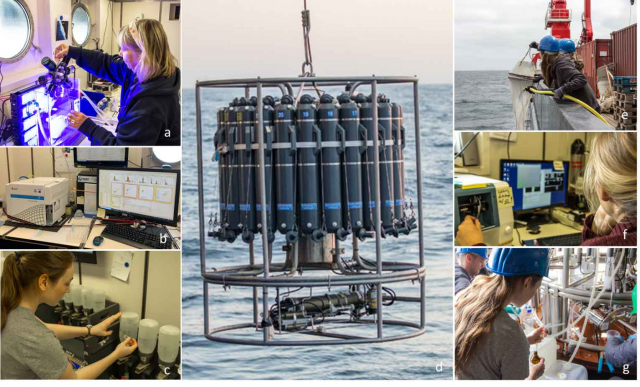
Sampling: a) Primary production experiments with water from the CTD. | b) The flow cytometer allows quantification and differentiation of different groups of picophytoplankton using laser beams and fluorescence detectors. | c) Filtration unit. The organisms collected on the filters are analysed for phytopigments. | d) CTD with rosette. The CTD measures conductivity, temperature, density and many other important parameters. | e) Sampling with a 20 µm aperture net. It can be operated by hand. f) The Flow-Cam photographs all particles that are in the sample flowing through it. With the help of a deep learning programme, the images can be classified later. g) Sampling water samples at the CTD.
The phytoplankton were collected from the water of the CTD/rosette water sampler and subsequently filtered and examined on board according to the different size classes (pico-, nano- and microphytoplankton) via special filtration systems. The chlorophyll a content from water samples was determined onboard the ship, while samplesfor stable isotopes and fatty acids will be analysed later in the home laboratory. A total of around 7,500 litres of seawater were filtered from 56CTD stations.
The larger phytoplankton and microzooplankton were collected 124 times with an Apstein net (20 µm mesh size) down to 10 m² and with a multinet at 52 stations respectively. The used Multinet has a mouth-opening of 0.25 m² and a mesh size of 55 µm and can be opened and closed in distinct water depths, thus allowing a high resolution of the water column. First analyses of the composition of different size classes of the Plankton could already be carried out on board with the flow cytometer for picophytoplankton and the flow cam for microphyto- and microzooplankton. Other samples will be fixed and analysed later in the home laboratory.

A small glimpse into the diversity of the microplankton world, photographed with the Flowcam.
Initial results indicate that in the open ocean picoplankton dominates, i.e., the smallest phytoplankton in the size range around one thousandth of a millimetre, while near the coast in the upwelling area, massive accumulations of diatoms belonging to the microphytoplankton appeared and with them the first predators, the microzooplankton.
22 October 2021: Mesopelagic fishes in the Benguela
Sabrina Duncan reports:
Mesopelagic fishes are those that inhabit waters from 200- 1000 meters. These include lanternfishes (Myctophidae), dragonfishes (Stomiidae), hatchetfishes (Sternoptychidae) as well as numerous other families. While little attention is given to these fish, they are important in the marine food web as well as the ocean’s biological pump. They feed on organisms such as copepods, krill or small fishes and are important prey for predators such as seals, sharks, hake, and tuna. Every night, the largest migration on earth takes place in the world’s oceans. Copepods, euphausiids, and fish that inhabit the mesopelagic zone come to the surface at night to feed. This migration is called diel vertical migration and happens each day and night. When fish come to the surface to feed, they return to the depths before daylight where excretion takes place, leading to the transport of carbon and nutrients to the mesopelagic layer.
Mesopelagics play an important role in the food web and are therefore of great interest to the TRAFFIC project (TRAFFIC LINK MESOPELAGICS). Because little is known of their diversity and the environmental factors that influence their composition, mesopelagic fishes are collected from stations throughout the northern and southern subsystems. In 2019 these fishes were collected on the Meteor 153 expedition and the composition and abundance was compared between subsystems. On the SO285 expedition, I hope to compare results from the previous cruise and sea if there are any differences in the seasonality in each of the study regions. Because they are also important in the food web, we are also examining their diet through stomach content analysis and will use biochemical analysis in order to determine their position in the food web.
Mesopelagic fish perform vertical migrations and thus our sampling takes place at night where we have the greatest chance at collecting diverse species. We use a ‘rectangular midwater trawl’ which is a net with an 8 m2 opening and a cod-end where fish are collected. This device is slowly towed through the water. Because not all mesopelagic fish species perform migrations, we sample at 500 m so we can catch both vertical migrators and non-migrators. After the haul comes up, fish are sorted by family and identified to species level. We take various tissue samples for biochemical and genetic analysis and then freeze fish so they can be used for tissue samples in the future or we preserve them in formalin. Because the nBUS and sBUS are influenced by different water masses, we previously saw differences in the community composition of fishes between the two subsystems with the north having lanternfish species that are more typical of tropical Angolan waters and the southern subsystem having species with more temperate patterns or warm water patterns from the Agulhas current.
As of now the net has been packed and we are on our way home! After we return to Emden, we are excited to bring our samples back to the Thünen Institute where we will continue analysing samples!

The rectangular midwater trawl being lowered into the water for a night haul (Photo: Solvin Zankl)
8 October 2021: Genetik von mesopelagischen Fischen
Eva Paulus reports:
I am collaborating with the TRAFFIC project and working with mesopelagic fishes. The scientists at the Thünen Institute have been researching mesopelagic fishes in the Benguela, with a focus on the diversity and role of fishes in the food web of the northern and southern subsystems (more to come later!). I am interested in Stomiiformes. This diverse order includes lightfishes, dragonfishes, hatchetfishes, as well as other families, many of which consume lanternfishes.
Dr. Anne Sell, scientist at the Thünen Institute of Sea Fisheries, is constructing a DNA reference library of the animals found in the Benguela Upwelling System based on the barcoding gene (COI). As part of my PhD thesis, I will be constructing a phylogeny of dragonfishes based on multiple genes to illuminate the relationships and evolutionary history of this diverse group of fishes.
Ein Tiefsee-Beilfisch (Argyropelecus hemigymnus). Von jedem Fisch werden Gewebeproben für die genetische Analyse entnommen. | Hatchetfishes (Argyropelecus hemigymnus). Tissue samples will be taken from each fish for genetic analysis.
Very little is known of the genetics of dragonfishes, and I am hoping to sequence a whole genome of at least five individual specimens caught during this trip. This will help us to identify which parts of their genome are selected in fishes that behave in different ways, e.g. fishes that undergo diel vertical migration and others that do not. Diel vertical migration is the daily migration that most mesopelagic organisms are undergoing in order to feed in the more nutrient-rich upper layers of the ocean where photosynthesis occurs and algae form the basis of the food web. In addition, during this cruise, I am filtering water from the water column to see whether we can find environmental DNA (eDNA) only of the fishes we are catching in the nets, or whether we find that the true diversity of fishes is greater than what we are actually catching. It is possible that fishes are evading the net, but their DNA can still be found in the water column.
We are currently finishing the sampling of our transects. After we arrive in Germany, many months will be spent in the lab analyzing samples at the University of Konstanz!
24 September 2021: Focus on climate change
On the 24th of September, climate activists around the globe met to protest for their voices to be heard, for urgent action to safeguard our climate, and for a better future for all. This particular global strike focused on the intersectionality of the climate crisis, shedding light on topics such as colonialism, discrimination, and climate injustice, particularly the Global North’s vast contribution to global emissions.
The most recent IPCC (Intergovernmental Panel on Climate Change) report, released on the 6th of August, states that human activity has warmed the climate system by at least 1°C since the industrial revolution. Our actions in the next decade will have far reaching consequences for the future of our planet. If we continue with business as usual, warming is likely to reach 1.5°C between 2030 and 2052. That means that the time to act is now. We cannot ignore what is happening on our planet.
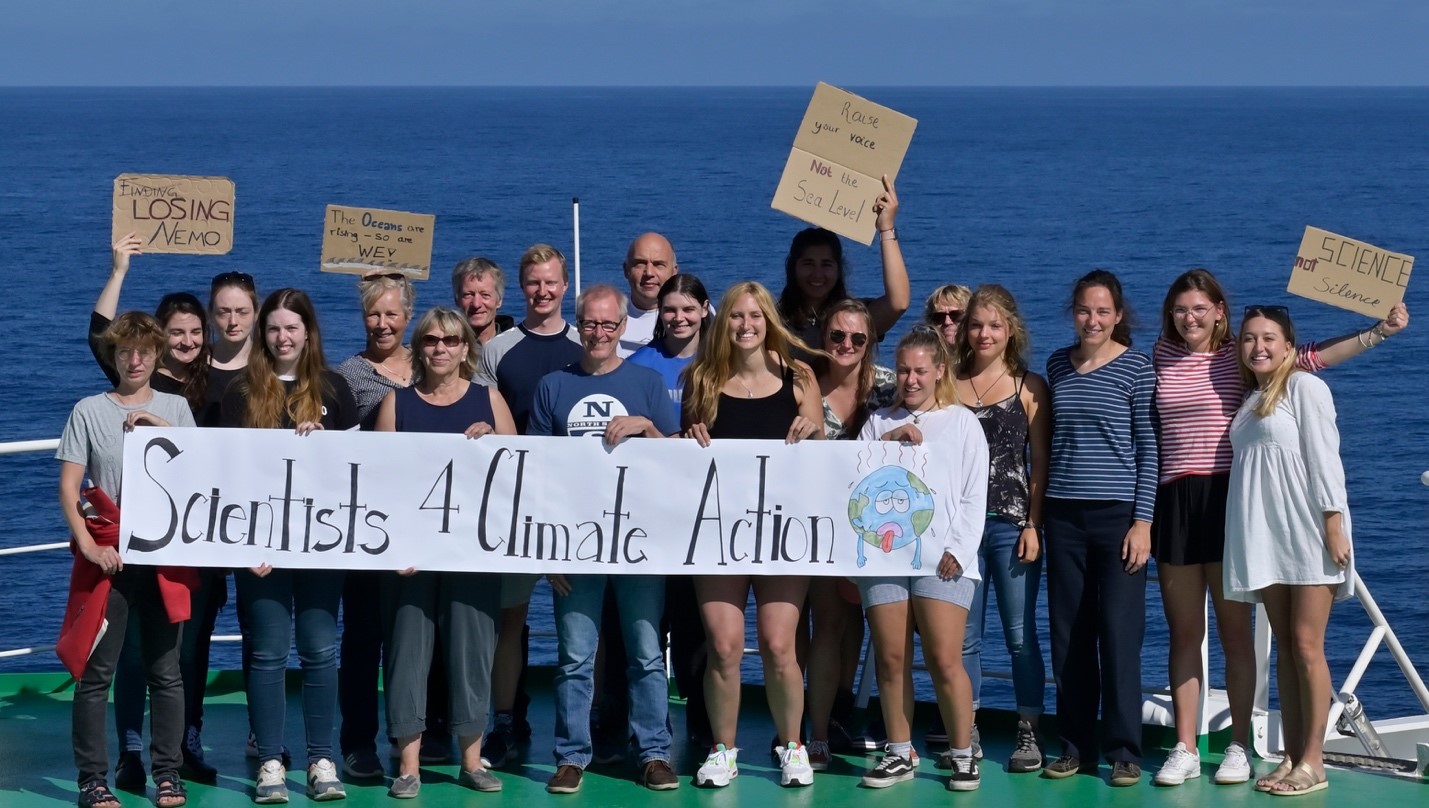
While scientists on board the research vessel SONNE could not be physically present at the strikes, they decided to still let their voices be heard. They gathered to support the strike and for a protest to raise awareness of the immense problems we are facing.
Scientist onboard the RV Sonne are a part of the TRAFFIC (Trophic tRAnsfer eFFICiency in the Benguela Current) project. The project aims to identify differences in trophic pathways to better understand climate change impacts on ecosystems services such as fisheries and the biologically mediated CO2 uptake of the ocean in Benguela Upwelling Systems (BUS) in southeastern Atlantic Ocean. Upwelling systems such as the BUS are among the most productive regions in the ocean and of crucial importance for fisheries and food security.
20 September 2021: So close yet so far…
Barbara Springer reports:
After 27 days at sea, we reached the port of Cape Town on the morning of September 16th. The city is located in the southwest of the Republic of South Africa and is known for its landmark, the Table Mountain. Entering a port is always something special, especially when you've spent weeks at sea without seeing land.
Usually there is a lot of activity on a day in port because the port call must be planned intensively by the captain in cooperation with the chief scientist, the ship's agent in the port, the shipping company and other agencies: When will the provisions be delivered? How much rubbish is to be disposed? And when to bunker the fuel?
Due to the strict Corona regulations in South Africa, everything was a little different this time: The ship waited in the early morning in the roadstead for a boat with medical staff, who tested both the crew and the scientists with a rapid test for the Corona virus. Only after it was clear that all tests were negative and the pilot boat arrived. With his help and two tug boats, the SONNE was brought to the pier in Cape Town and moored.
Then the agent and the authorities came on board to finish many formalities. We scientists stayed away for safety reasons and watched what was happening from the higher decks. Due to Covid regulations, we were not allowed to leave the ship, but we certainly enjoyed the view of Table Mountain! The supplies for the galley were also replenished: fresh vegetables, lettuce and fruit. In addition, 14 canisters (5l each) with dishwashing detergent were delivered. The food and the quality of the catering contribute significantly to the good mood on board. At the moment, two cooks cater to the 62 people at the SONNE every day. The meals are always rich, varied and very tasty. Maybe a few figures: 60 rolls and 2 baguettes or breads are baked every day, around 130 eggs and almost 2 kg of butter are used, 1 kg of coffee is consumed, as well as 12 liters of milk. There is also mineral water and juices. The storage rooms and storerooms have to be filled accordingly. Kudos to the chefs for the delicious meals and to the stewards for the excellent service around the clock! We have to be very careful not to come home with too many added pounds, with all the great meals! After 14 hours in port we headed to our first sampling stations! More about that later in our next blog entry.
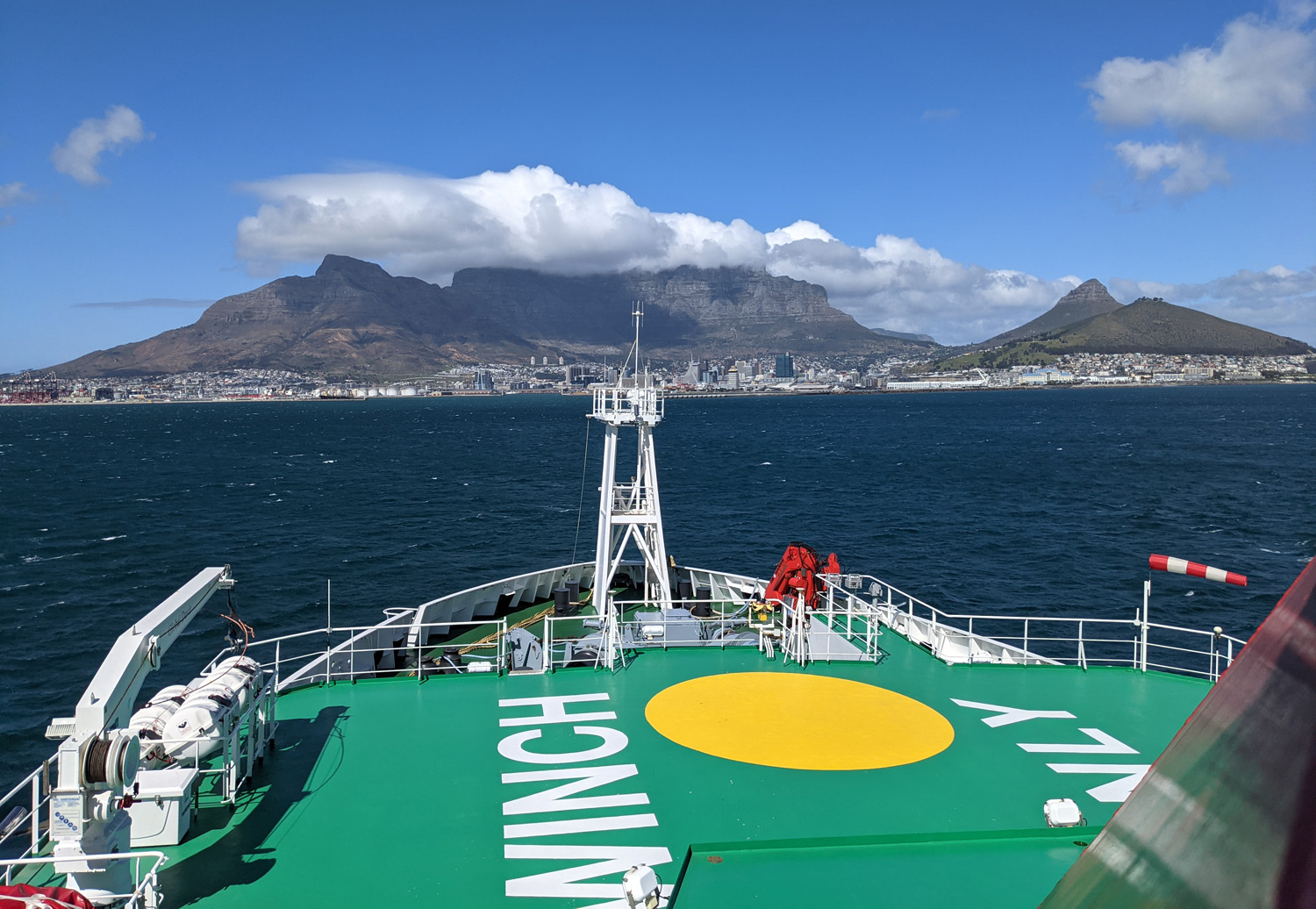
The Sonne entering the port of Cape Town (Photo: Sabrina Duncan)
14 September 2021: Salvaging bouys
Luisa Meiritz reports:
PIRATA buoys in the ocean – no, we don’t talk about pirates, but about a data collecting project. PIRATA stands for ‘Prediction and Research Moored Array in the Tropical Atlantic’ which is an anchored measurement system for forecasting and research in the tropical Atlantic. These buoys are weather buoys that are firmly anchored to the seabed and transmit information about the weather and surface water masses via satellite to land around the clock. Parameters such as solar radiation, wind speed, water temperature and water currents are measured with different sensors above and below water.
The PIRATA project has been around since the 1990s and has been expanded and developed since the 2000s in order to collect weather data, especially in the tropical Atlantic. Several tropical Atlantic bordering countries are involved in this project under the direction of NOAA (National Oceanic and Atmospheric Administration).
For a previously unknown reason, two PIRATA buoys broke loose at the beginning of 2021 and are now drifting freely in the ocean. And this is where we come in. The vessel SONNE is currently the only research vessel that is in the vicinity of the free-floating buoys. Therefore we try to salvage the buoys and bring them back home safely!
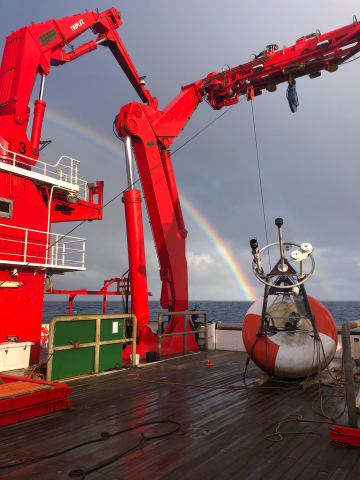
PIRATA Buoy safely on deck! Instruments have been cleaned and are ready to be sent back to the USA where data will be downloaded and analysed. (Photo: Kelsey Stanbro)
2 September 2021: Climate Change and Storage of CO2
Report of the Biogeochemistry team:
One of the aims of the TRAFFIC research project is to get to the bottom of the effects of climate change on the ocean's CO2 storage in the Benguela upwelling region. Onboard the RV Sonne, the biogeochemistry working group is now particularly concerned with understanding and quantifying the circulation and turnover of carbon in the water column, as well as the gas exchange of CO2 at the ocean surface with the atmosphere. Following up on our previous research cruise on RV Meteor, we will address the influence of the different source water masses feeding the northern and southern upwelling systems to different extents, and investigate seasonal characteristics, e.g., with respect to oxygen and nutrient concentrations.
Our research methods include sampling the water surface using measuring systems that are continuously supplied with seawater pumped from the ship's moon pool from a depth of about 5 meters. Together with the atmospheric concentration, we can thus determine the parameters relevant to us. These include pH, surface temperature and salinity, partial pressure of CO2, as well as alkalinity and dissolved inorganic carbon concentration.
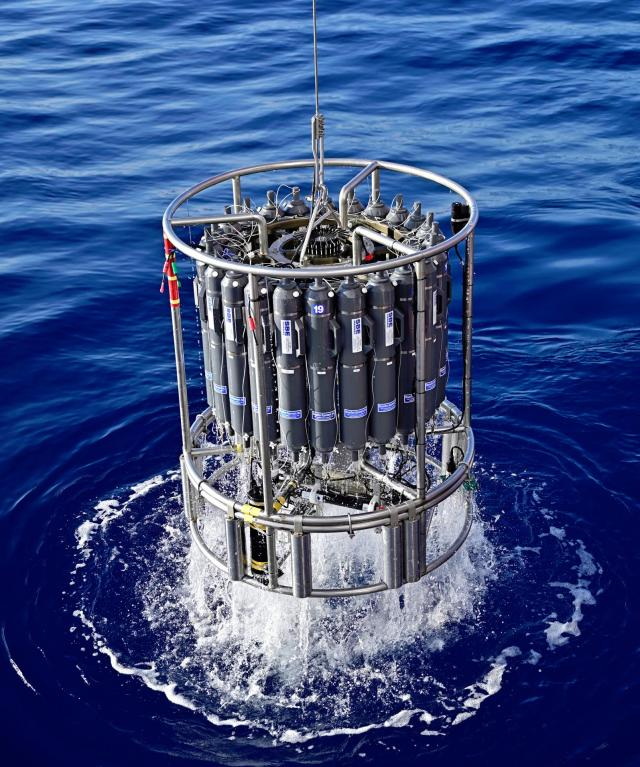
Deployment of the CTD-Rosette to obtain water samples from different ocean depths. (© Solvin Zankl)
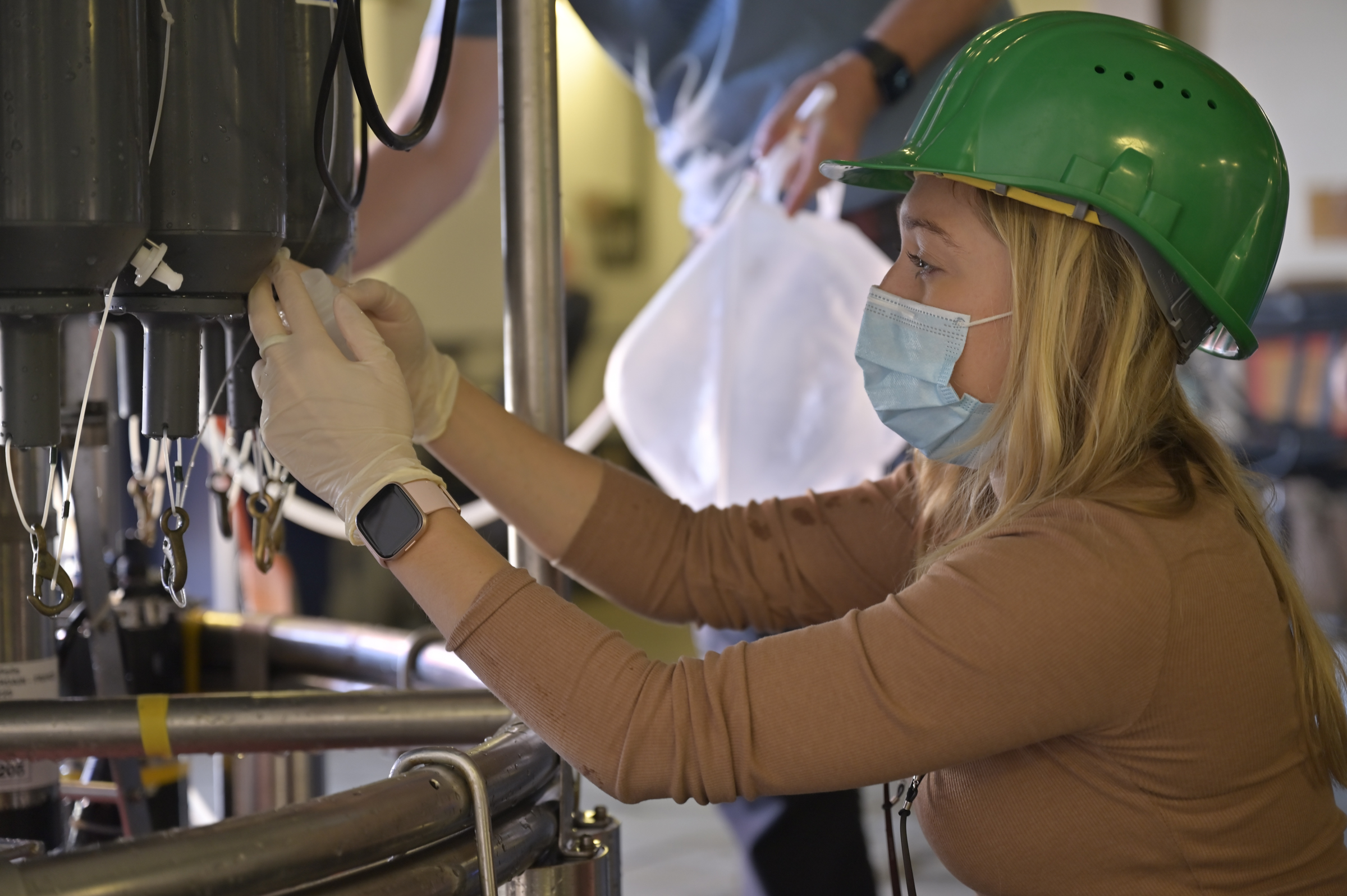
Watersampling from the CTD-Rosette for dissolved inorganic nutrient analysis. (© Solvin Zankl)
To study the water column, water samples are collected from the CTD rosette's crown water sampler to analyze the supply and turnover of nutrients, which contribute essentially to the productivity of the marine ecosystem. Furthermore, mooring systems are used to collect short- and long-term particle transport from the ocean surface to the deep water layers via so-called sediment traps. This can then be evaluated biologically and geochemically.
The team of our working group Biogeochemistry consists of the students and the research assistant from the University of Hamburg, Natalie Reule, Sina Pinter and Luisa Meiritz, our technician Fabian Hüge from the ZMT, as well as the two PhD students Sina Wallschuss and Claire Siddiqui from the University of Cape Town and University of Hamburg/ZMT.
So far, we have been able to test many of our instruments. We are very much looking forward to the upcoming work and are eager to see the results we will gain on our second TRAFFIC cruise.
Many greetings from aboard the RV Sonne,
the Biogeochemistry Team
23 August 2021: On course
Das wissenschaftliche Team des TRAFFIC-Projekts ging am 19. August an Bord der Sonne, wo es seine erste Nacht auf dem Schiff im Emder Hafen verbrachte.
Scientists of the TRAFFIC project boarded the R/V Sonne on August 19th where they spent their first night on the ship in the Emden port.
Text & photos: Sabrina Duncan, Thünen-Institut
On August 20th the scientists of the TRAFFIC project set sail on the R/V Sonne 285 expedition. Due to Covid regulations in international ports, this trip is a little longer than the last. Instead of flying to Walvis Bay, Namibia, as on the first expedition in 2019 (Meteor 153 cruise), this cruise begins in Emden, Germany and will sail to the Benguela Current, and then return back to Emden in November for a total of 74 days at sea.
On the cruise there are thirty-two crew members and thirty scientists. Many students are looking forward to their first experience on a research vessel. All, scientists and crew must wear masks, take a daily rapid self-test, and on the 7th day will have a PCR test before the sense of normalcy can begin.
The aim of the TRAFFIC project is to investigate carbon uptake and the efficiency of the food chain from phytoplankton to mesopelagic fishes in the northern and southern subsystems of the Benguela (for details, see link to TRAFFIC project above).
After leaving Emden, the unloading of gear from containers began. This was followed by the set-up of laboratories and equipment such as the CTD, zooplankton multinets, and fishing nets. To take advantage of the long journey, the team will not only be sampling in the Benguela region, but they will also have stations along a transect, starting with a station located in the open ocean, off the Bay of Biscay. At the first station, the CTD Rosette will be deployed to collect the first water samples and a multinet will be used to collect phytoplankton and microzooplankton at various depths in the water column. During the next days, new and old gear will be tested, such as a fishing net which is a combination of a Rectangular midwater trawl (RMT 8), and a connected multisampling net.
On the morning of August 22, the group witnessed their first of hopefully many dolphins to come and is eager for what’s next!
Cheers,
The TRAFFIC Team





